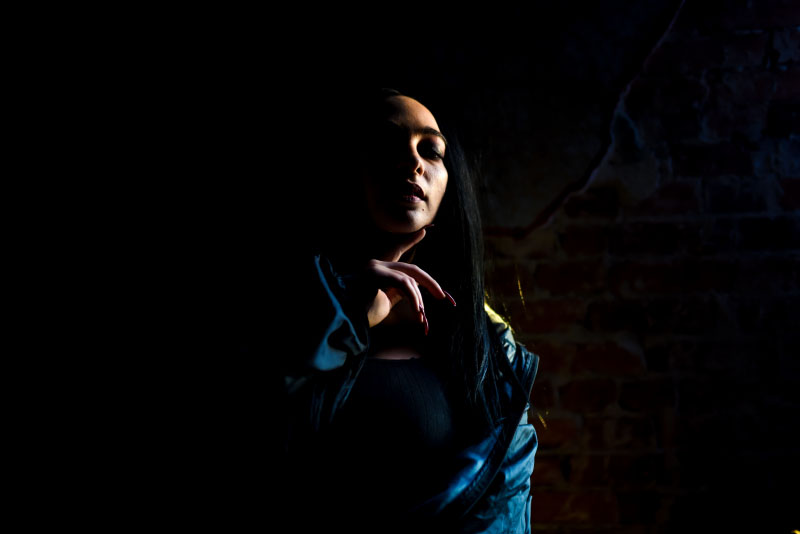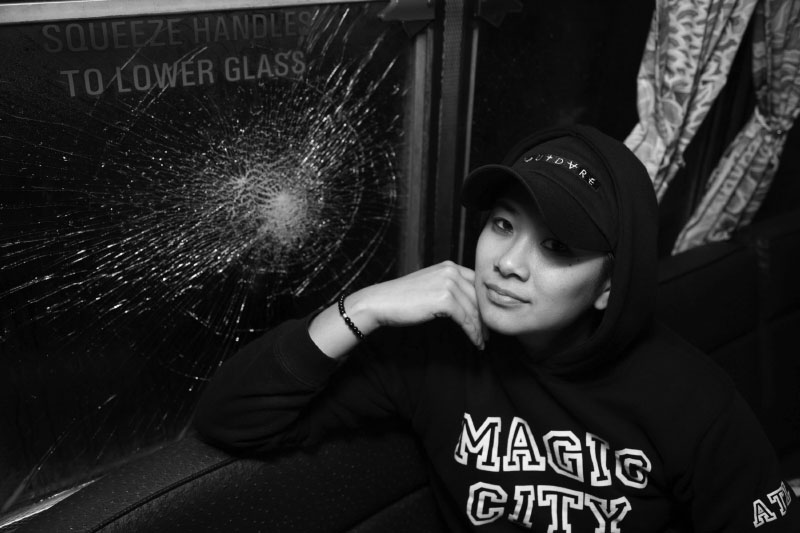Loud Sound
Loud Sound
DHC/ART is happy to unite Discwoman and the work of Bharti Kher on the occasion of a live performance by DJ Haram within the exhibition Points de départ, Points qui lient by Bharti Kher. Bharti Kher’s commitment to claiming space for female subjectivity inspired us to invite Discwoman, a New York-based platform, collective, and booking agency advocating for women talent in a male-dominated electronic music world.
We are happy to present this event in our spaces, with the objectives to empower women and create a dialogue with Bharti Kher’s artworks, such as Virus IX. Virus IX has a performative quality: the piece is accompanied by a text written by the artist and consists of predictions, the timeframe of which is associated with the production of one Virus per year, from 2009 to 2039, when the artist turns 70. The text has a sci-fi component but also a gripping reality, a vision of how the world could change rapidly. The production of the artwork is a performance that extends and shares its production with another person from the organization receiving the piece.
In her conversation with Cheryl Sim, Bharti Kher used the metaphor of the snake to describe how she felt moving to New Delhi after having grown up in England: “Making art is like being a snake, you have to hear with your tongue.” For Kher, being an artist is often about finding another way of interacting with the senses.
In anticipation of the event, we shared a few questions with DJ Haram and Christine McCharen-Tran, one of the founders of Discwoman.

DJ Haram, photo: Eva Wo.
First of all, we are happy to welcome you at DHC/ART! We would like to talk about the importance of your work within Discwoman’s mission. Your practice is broad: you are a musician, producer and curator. In 2004, you compiled and curated the zine Bros Fall Back which has reached academic circles and various DIY scenes; you created the Identity Crisis mix which was 1 of 3 of the Crisis Mix Series for Browntourage magazine in 2015 and you curate the (f)LAWLESS nights in Philadelphia amongst all of your projects. Could you tell us more about your work as an artist? The strong musical direction and politics appear interwoven, especially in how you approach community building and questions around diaspora through your sound. How important is your relationship with location in your work, and how does it relate to your identity as someone who grew up in North Jersey from a Middle Eastern Heritage?
DJ Haram: Thank you. My work is based in sound design, music production, and DJing. I often focus on silence, noise, bass, collaborative improvisation, traditional Middle Eastern percussion and instruments. Location and environment are influences that I see as unavoidable to any artist/work. I chose to focus on them. I draw out and highlight my experiments as meditations of their environment.
We would like to ask you about your personal relationship to sound through time, since you started and how it evolved, and its potential to reach, connect, share, and create anthems, juggling with the idea of representing and sharing, in order to belong.
DJH: I have always been obsessed with loud sound. Growing up, loud music was rarely appropriate so if I got the chance I'd be happy listening to almost anything if it could be loud. This is why live music, house parties, and clubbing appealed to me early on. Once I entered those spaces I was introduced to the culture beyond the music, the communities. I didn’t understand why people I knew either wanted to go to teen clubs or they were down to go to DIY punk shows, never both. I didn’t see either as “my community” but I was also 15, so, there’s that. The feeling of “belonging” only came when I started going to more queer events, became friends with other musicians, and started making music myself.
Representation is very important in some ways, but representation of a culture/people in music does not always reflect that its community is uplifted, being honoured.
I remember being a young person and learning about sound torture in Abu Ghraib, I remember hearing people insensitively saying the song choices were so “ironic”. This began to teach me about the real and sometimes horrifying power of music and how music's context, environment, manipulation, etc. directs its power regardless of the artist's intent, meaning, desire, etc.
What type of sounds can we expect on August 30 in dialogue with Bharti Kher’s artworks presented at DHC/ART?
DJH: I will be mixing a combination of sounds that I find very spiritual—vocal melodies, hand drumming percussion, and bass. I will be collaging and processing the sounds/songs live.

Christine McCharen-Tran, photo: Sam Richardson.
Discwoman is a friendship story. Each founder had ideas about electronic music and the place of women within these scenes, and you all evolved differently to work on this platform together, sharing a desire to be part of something bigger than yourselves and be part of a community. How did you start Discwoman? Perhaps you can discuss the importance of maintaining these platforms for empowerment and experimentation?
Christine McCharen-Tran: Discwoman is a collective, booking agency, and platform that centres and supports femme and non-binary DJ and producers across electronic music. Frankie, Emma and myself each came from different aspects of nightlife whether organizing, performing or participating, we all engaged and needed nightlife for discourse beyond music—more so as a space to explore identity, politics, community, etc. We started Discwoman in September 2014 as a platform for visibility and representation. It was initially a one-off event. But it snowballed into: “How do we actually become stakeholders in this conversation in music?” The more we explored ways to disrupt cis-white male spaces, we discovered the need for infrastructure to get women paid which is why we formalized the booking agency and began representing and managing artists early 2015. We continually want the platform to centre and amplify artists and their work.
Could you talk about the activism of Discwoman and how it is influencing and expanding the music scene in different parts of the world? Discwoman collaborations seem to go above and beyond the scope of music: for example, last month’s event for Pride at the Whitney Museum in New York and earlier this month, the workshop on the challenges of setting up an inclusive artist agency that you have facilitated at De School in Amsterdam.
CMT: We aim to impact spaces whether through education programming, showcases, mixes, and sometimes occupying spaces.
Discwoman’s mission is, in part, to share and influence other women on various levels and abroad. How do you envision the future of Discwoman?
CMT: As we see the growth of our artists on the stage we’re also growing our team behind the scenes. Our goal is to also bring more diversity within the infrastructure, supporting artists and seeing more diverse decision makers booking festivals, owning venues, bringing artists into their spaces.
DJ Haram will perform a live composition that draws from a wide range of electronic music within the exhibition space alongside the works Virus IX and Cloudwalker on August 30 at 8 PM.
Photo: Discwoman by Tyler Jones (cover).